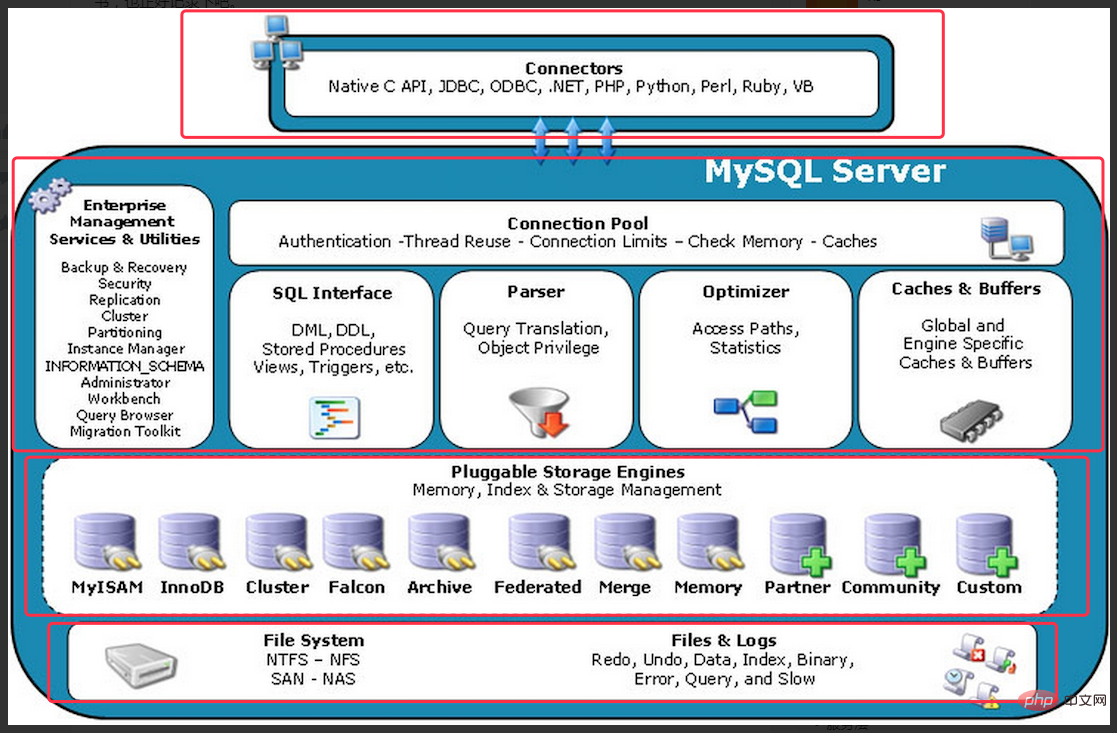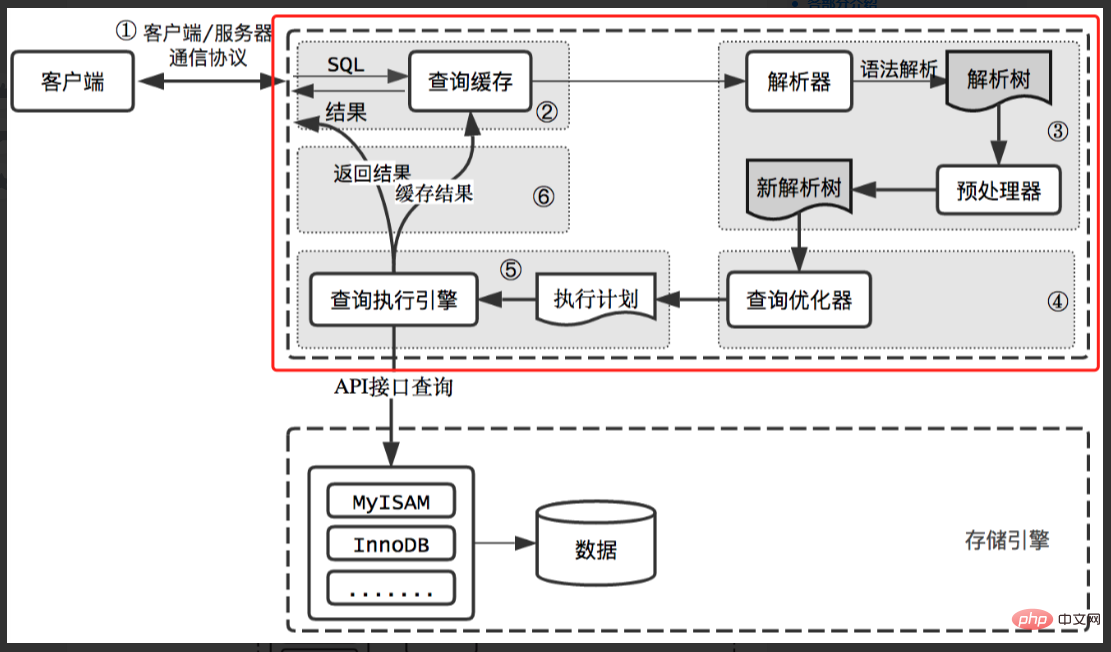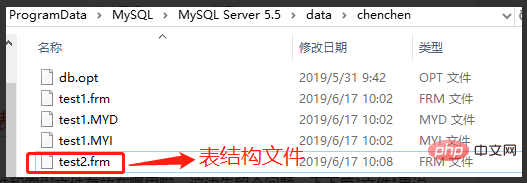A brief discussion on the overall architecture of MySQL

Preface
It’s another new week, happy Monday everyone.
Due to a series of things like changing jobs and looking for a house, I have stopped updating for more than a month recently. Now that everything has been settled, I can code in peace.
Okay, without further ado, let’s start a new journey. I have been reading the book "MySQL Technology Insider - InnoDB Storage Engine" recently, so I just want to record it.
Overall Architecture Diagram
Let’s first take a look at the architecture diagram of MySQL to have an overall understanding of it. MySQL is mainly divided into four layers of architecture, namely network connection layer, service layer, storage engine layer and physical layer. The SQL statements we usually write and the optimization of SQL statements are all in the service layer. It actually follows certain principles so that the SQL statements can be executed according to our expected results.

Introduction to each part
Network connection layer
is mainly responsible for connection management, authorization authentication, security, etc. Each client connection corresponds to a thread on the server. Maintain a thread pool on the server to avoid creating and destroying threads for each connection. When a client connects to a MySQL server, the server authenticates it. It can be authenticated through username and password, or it can be authenticated through SSL certificate. After login authentication, the server will also verify whether the client has the permission to execute a certain query. This layer is not a technology unique to MySQL.
Service layer
This layer is the core of MySQL, including query cache, parser, parse tree, preprocessor, and query optimizer.

Query Cache
Before the formal query, the server will check the query cache and if it can find the corresponding For queries, there is no need to perform query parsing, optimization, execution and other processes, and the result set in the cache is directly returned.
Parser and preprocessor
MySQL's parser will construct a parse tree based on the query statement. It is mainly used It is used to verify whether the statement is correct based on grammatical rules, such as whether the SQL keywords are correct and whether the order of the keywords is correct.
The preprocessor is mainly for further verification, such as whether the table name and field name are correct, etc.
Query optimizer
The query optimizer converts the parse tree into a query plan. In general, a query can be executed in many ways , ultimately returning the same result, the optimizer is to find the optimal execution plan
Execution plan
After completing the analysis After the optimization phase, MySQL calls the corresponding interface provided by the storage engine layer according to the corresponding execution plan to obtain the results.
Storage engine layer
is responsible for the storage and retrieval of MySQL data. It provides a series of interfaces to shield the differences between different engines.
Note: The storage engine is for tables, not for libraries. In other words, different tables in the same library can have different storage engines.
There are two common storage engines, MyISAM and InnoDB. Let’s take a look at their differences.
First, we create a test1 table with the storage engine MyISAM.
create table test1( a INTEGER, b varchar(10) )ENGINE=MyISAM;
We can go to the relevant directory of MySQL to see its actual stored content and find that it corresponds to three files.

#Secondly, we create a test2 table with the storage engine InnoDB.
create table test2( a INTEGER, b varchar(10) )ENGINE=INNODB;
Let’s take a look at its actual stored content and find that it corresponds to this file.

Then the question arises, where are his data files and index files stored? I’ll leave you with a question here for now, and we’ll talk about it in the next chapter, “Documents.”
Physical layer
Stores data on the hard disk.
Overall process
We send a SQL statement, what is its overall process in MySQL?
The user first establishes a connection with the server through a client such as Navicat. A username and password are required for authentication, or an SSL certificate can be used for authentication.
After successful login, MySQL will determine whether the role has permissions on some tables based on the corresponding permissions.
If you have relevant permissions, when the user sends a query select statement, MySQL first queries the cache. If there is already a cache for this statement, it will return directly. If not, execute the following process. If it is an update, a new insert, or a delete, the cache will not be queried and the following process will be executed directly.
MySQL will parse the SQL statement into a tree and then verify it, such as whether the keywords are correct, whether the keyword order is correct, whether the table name is correct, whether the fields are correct, etc. If the authentication is not successful, an error will be returned directly. If the authentication is successful, proceed directly to the following process.
MySQL performs query optimization on the parse tree, because multiple SQL statements may express the same meaning, but the time consumed may vary greatly. Therefore, MySQL finds the optimal statement execution for the storage engine of the table, that is, generates the corresponding execution plan.
Use the execution plan generated above to call the storage engine layer interface. That is the explain we usually use, which can be used to check whether the index is indexed, the time consumed and other information.
Different storage engines will go to the corresponding physical storage location, find the corresponding data, encapsulate and return the results.
If the result set is obtained and it is a select statement, MySQL will put the results into the cache to avoid resource consumption caused by performing the same operation next time, and return it to Client result. At this point, the execution process of a SQL statement is over.
For more MySQL related technical articles, please visit the MySQL Tutorial column to learn!
The above is the detailed content of A brief discussion on the overall architecture of MySQL. For more information, please follow other related articles on the PHP Chinese website!

Hot AI Tools

Undresser.AI Undress
AI-powered app for creating realistic nude photos

AI Clothes Remover
Online AI tool for removing clothes from photos.

Undress AI Tool
Undress images for free

Clothoff.io
AI clothes remover

Video Face Swap
Swap faces in any video effortlessly with our completely free AI face swap tool!

Hot Article

Hot Tools

Notepad++7.3.1
Easy-to-use and free code editor

SublimeText3 Chinese version
Chinese version, very easy to use

Zend Studio 13.0.1
Powerful PHP integrated development environment

Dreamweaver CS6
Visual web development tools

SublimeText3 Mac version
God-level code editing software (SublimeText3)

Hot Topics
 1664
1664
 14
14
 1423
1423
 52
52
 1318
1318
 25
25
 1269
1269
 29
29
 1248
1248
 24
24
 MySQL's Role: Databases in Web Applications
Apr 17, 2025 am 12:23 AM
MySQL's Role: Databases in Web Applications
Apr 17, 2025 am 12:23 AM
The main role of MySQL in web applications is to store and manage data. 1.MySQL efficiently processes user information, product catalogs, transaction records and other data. 2. Through SQL query, developers can extract information from the database to generate dynamic content. 3.MySQL works based on the client-server model to ensure acceptable query speed.
 Laravel Introduction Example
Apr 18, 2025 pm 12:45 PM
Laravel Introduction Example
Apr 18, 2025 pm 12:45 PM
Laravel is a PHP framework for easy building of web applications. It provides a range of powerful features including: Installation: Install the Laravel CLI globally with Composer and create applications in the project directory. Routing: Define the relationship between the URL and the handler in routes/web.php. View: Create a view in resources/views to render the application's interface. Database Integration: Provides out-of-the-box integration with databases such as MySQL and uses migration to create and modify tables. Model and Controller: The model represents the database entity and the controller processes HTTP requests.
 MySQL and phpMyAdmin: Core Features and Functions
Apr 22, 2025 am 12:12 AM
MySQL and phpMyAdmin: Core Features and Functions
Apr 22, 2025 am 12:12 AM
MySQL and phpMyAdmin are powerful database management tools. 1) MySQL is used to create databases and tables, and to execute DML and SQL queries. 2) phpMyAdmin provides an intuitive interface for database management, table structure management, data operations and user permission management.
 MySQL vs. Other Programming Languages: A Comparison
Apr 19, 2025 am 12:22 AM
MySQL vs. Other Programming Languages: A Comparison
Apr 19, 2025 am 12:22 AM
Compared with other programming languages, MySQL is mainly used to store and manage data, while other languages such as Python, Java, and C are used for logical processing and application development. MySQL is known for its high performance, scalability and cross-platform support, suitable for data management needs, while other languages have advantages in their respective fields such as data analytics, enterprise applications, and system programming.
 Solve database connection problem: a practical case of using minii/db library
Apr 18, 2025 am 07:09 AM
Solve database connection problem: a practical case of using minii/db library
Apr 18, 2025 am 07:09 AM
I encountered a tricky problem when developing a small application: the need to quickly integrate a lightweight database operation library. After trying multiple libraries, I found that they either have too much functionality or are not very compatible. Eventually, I found minii/db, a simplified version based on Yii2 that solved my problem perfectly.
 Laravel framework installation method
Apr 18, 2025 pm 12:54 PM
Laravel framework installation method
Apr 18, 2025 pm 12:54 PM
Article summary: This article provides detailed step-by-step instructions to guide readers on how to easily install the Laravel framework. Laravel is a powerful PHP framework that speeds up the development process of web applications. This tutorial covers the installation process from system requirements to configuring databases and setting up routing. By following these steps, readers can quickly and efficiently lay a solid foundation for their Laravel project.
 MySQL for Beginners: Getting Started with Database Management
Apr 18, 2025 am 12:10 AM
MySQL for Beginners: Getting Started with Database Management
Apr 18, 2025 am 12:10 AM
The basic operations of MySQL include creating databases, tables, and using SQL to perform CRUD operations on data. 1. Create a database: CREATEDATABASEmy_first_db; 2. Create a table: CREATETABLEbooks(idINTAUTO_INCREMENTPRIMARYKEY, titleVARCHAR(100)NOTNULL, authorVARCHAR(100)NOTNULL, published_yearINT); 3. Insert data: INSERTINTObooks(title, author, published_year)VA
 Solve MySQL mode problem: The experience of using the TheliaMySQLModesChecker module
Apr 18, 2025 am 08:42 AM
Solve MySQL mode problem: The experience of using the TheliaMySQLModesChecker module
Apr 18, 2025 am 08:42 AM
When developing an e-commerce website using Thelia, I encountered a tricky problem: MySQL mode is not set properly, causing some features to not function properly. After some exploration, I found a module called TheliaMySQLModesChecker, which is able to automatically fix the MySQL pattern required by Thelia, completely solving my troubles.




